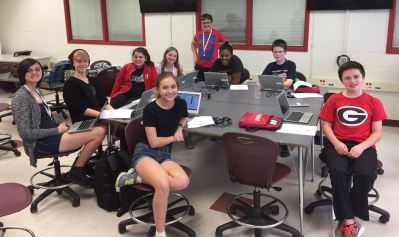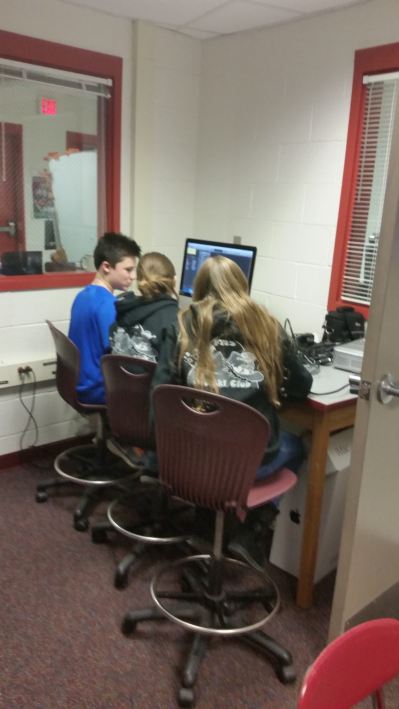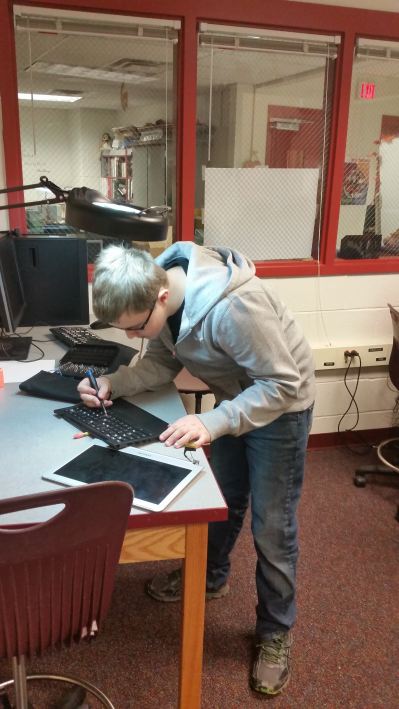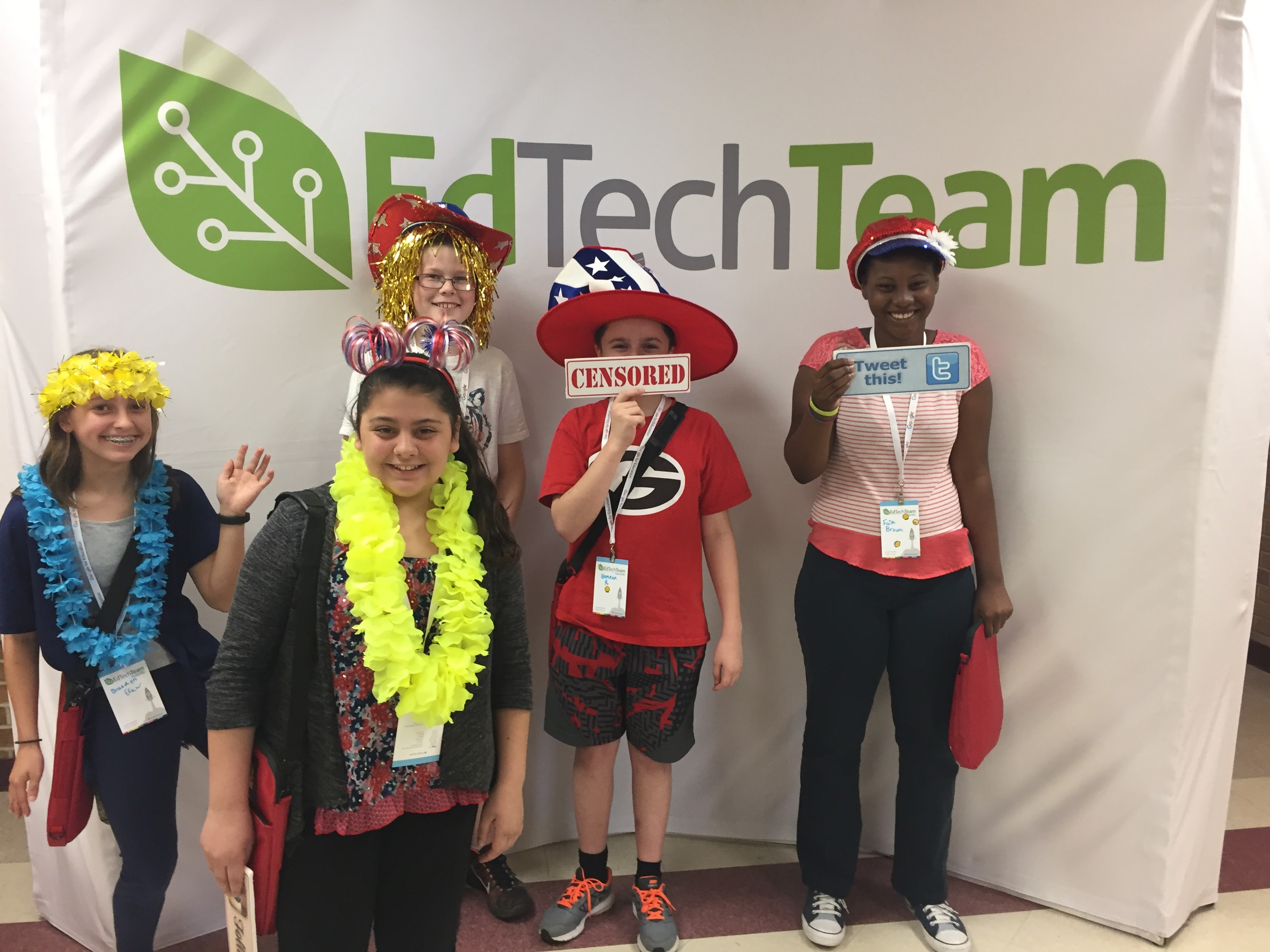Farnsworth Middle School - Help Me If You Can, I’m Feeling Down: We Want a Middle School Help Desk
It’s 10:15 AM on a Tuesday in March and classes have just changed at Farnsworth Middle School (FMS) in Guilderland, NY. Members of the FMS Student Help Desk are coming in to their office space to get their assignments. Brennan and Kim sit down with specialized computer repair tools to replace missing buttons on some Chromebook keyboards. James is picking up a new printer cartridge to replace an empty one in the main office. Amy and Braedyn are helping set up a new Chromebook cart. These are all jobs they take as seriously as any other IT professional and they are only in 8th grade!
How Did We Get Here?
Step 1: We Saw A Need
Step 2: Get Support
The idea was planted, and it took a team to bring it to fruition. If you want to start your own middle school help desk we strongly recommend having administrator support. There also needs to be teachers and technicians working together to advise the students and bring accountability to the program. Our team decided to model the structure off the Guilderland High School help desk, which was already successful. Their program is run by their librarians and IT department with strong support from their building and district administration teams. At FMS, it became a collaboration between our building principal, the district technology admin team, the computer techs, the librarian and the enrichment teacher.
There’s an inherent difference between our school and GHS due to grade level and maturity of the students. We also wanted to structure it differently from the GHS help desk by making our help desk a project-based service learning opportunity where students would earn pass/fail credit for their participation. Our students’ schedules do not allow for the help desk to be staffed all day like at the high school, so we had to find times where it would work into their day, such as before school, “access,” (which is our study hall time) lunch, and after school. Students at the high school level self-manage their projects by using the IT ticketing system, but we decided to guide students through the assigned tasks because of their grade level.
Step 3: What Is It Going to Look Like?
We had the idea, and we had the advisors, but now we needed to figure out what this help desk was going to look like. We narrowed it down to solving three key problems: where would the help desk be located, what students would run it and what would they do? We were able to find a room in our building that currently housed the library’s video collection and was strategically located next to the library, enrichment office and the IT office, so all our advisors could easily monitor it. The IT department took the lead in deciding the specific tasks that the students would work on. Initially, we believed that 1:1 implementation would happen in September 2017 and the help desk would focus on supporting that, but the project was delayed. Instead, we came up with other tasks for the students to focus on year one. The tasks our help desk team are currently responsible for includes:
- Responding to every request in a professional and courteous manner.
- Tech support and repairs:
- On Chromebooks
- Chromebook cart construction
- Changing toner in printers
- Supporting multimedia in classrooms (projectors, document cameras, DVD players, etc.)
- Exploring software titles and apps for school use
- Working on projects to support the larger community including a tech support website for faculty
Moving forward, students will continue working on these tasks in addition to helping with 1:1 implementation.
We also wanted a name that would stand out rather than just “FMS Student Help Desk.” The help desk advisors are all Disney fans, so they modeled the name off the Disney park cast members and came up with the acronym “FCAST” or Farnsworth Cares About Student Technology!
Step 4: Recruitment
The next challenge was deciding how to choose the team of students. We had a vision of what FCAST would look like, but now we needed the right students to be our charter members. Our school consists of grades 6-8, and we decided to start with 8th grade students because they are familiar with middle school expectations, would be in the best position to handle the responsibility as leaders in the school and are preparing to go to the high school where they could continue their work at the high school help desk. We also recruited current 7th graders who would be going into 8th grade in the fall. There were flyers put up and announcements made on the school’s morning news broadcast. Students were directed to fill out an application online and then get recommendations from two teachers. Candidates were interviewed by a panel of the advisors and at least one administrator. The interview experience was very important to us because we wanted students to practice what they would go through when applying for job. They answered questions not only about their tech skills, but also about how they handle challenging projects, how they work with others and why they wanted to be a part of the help desk. This allowed us to recruit students that we knew were serious enough about the position to take the time and apply. By not just handpicking students, it allowed us to get candidates beyond the “kids that are good at tech.” We received around 20 applicants and were able to narrow it down to ten based on their interviews.
Step 5: Training
The FCAST crew was now assembled. Next, we had to train them. We decided to bring them in over the summer for two days of training where we focused on tech skills, customer service skills and team building. Our computer technician taught the students some Chromebook repair skills and opened a computer to show them the parts. Customer service skills are an important component of a real job. We wanted to make sure that they knew how to walk into a classroom to help a teacher and not disturb a class going on, answer the phone to gather the right information when a teacher called for help, and most importantly, not dismiss the person they were helping for not knowing how to do something. The whole second day was dedicated to team building; students had to complete a scavenger hunt around the building, stopping in different locations to fix technology issues such as changing a toner cartridge or hooking up a laptop to a projector. These are the issues we anticipated they would be working on most often.
Step 6: Startup and Ongoing
The Learning Never Stops!
These students are very talented but are involved in many different activities. Between sports, the school musical, extracurricular clubs and their school work, they have packed schedules. We initially tried to have students manage their own help desk schedules on a Google calendar, but that didn’t work out too well. For the next group, we plan to give them set schedules and require attendance at least three times a week. This way we can assure the help desk will always have someone there during the times it’s open and that projects won’t get lost in the repair process as we wait for the students who started certain projects to return and finish.
Reflecting on our journey, we have accomplished a lot during the first year of the FMS FCAST help desk. We believe we have provided a positive experience for these students and that they have completed some amazing self-driven learning tasks. The most honest assessment of our team comes from the students themselves. Amy M. says, "FCAST was an amazing experience! We had an amazing team and working together to problem solve and fix things was really fun!" Kim R. says, “Being a part of a middle school help desk has been an amazing experience. I have met new friends, learned how to take apart a keyboard properly and have helped so many people throughout the school with their technology problems.”
So, if you are thinking about starting help desk the best advice will can leave you with comes from Kim R., “To start a middle school help desk you have to target the right audience and say the right things to get them interested. Hold an informational meeting and talk about some of the things that they will be doing in the help desk. Some people will leave, that's alright. Those that remain interested will most likely be awesome candidates.”
Contact
- Alicia Malanga - Enrichment Teacher, Farnsworth Middle School, malangaa@guilderlandschools.net, Twitter: @Mrs_Malanga
- Maura Nichols - Librarian, Farnsworth Middle School, nicholsm@guilderlandschools.net, Twitter: @NicholsMaura
- Jamie Snyder - Computer Technician, Farnsworth Middle School, snyderj@guilderlandschools.net









